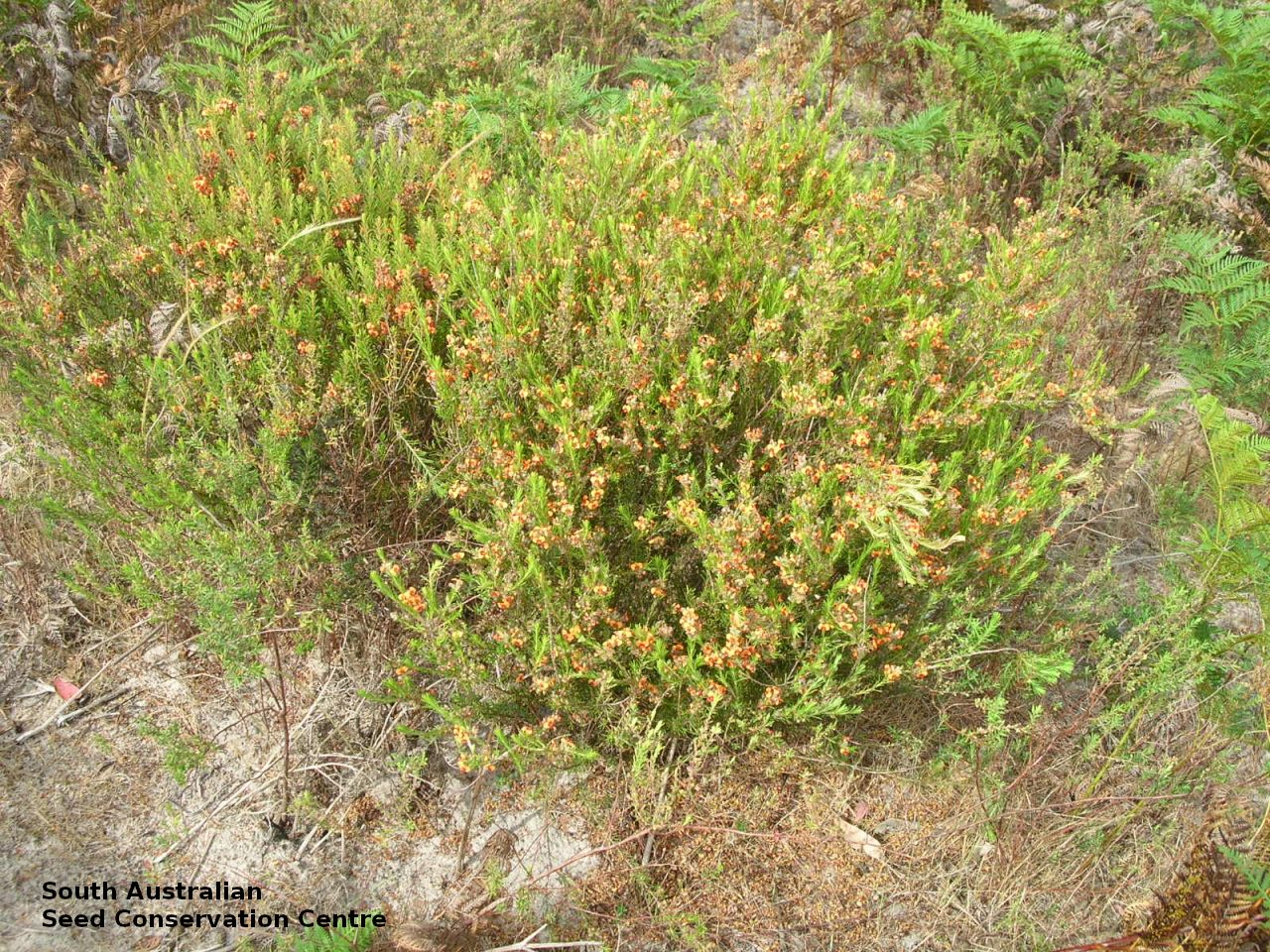
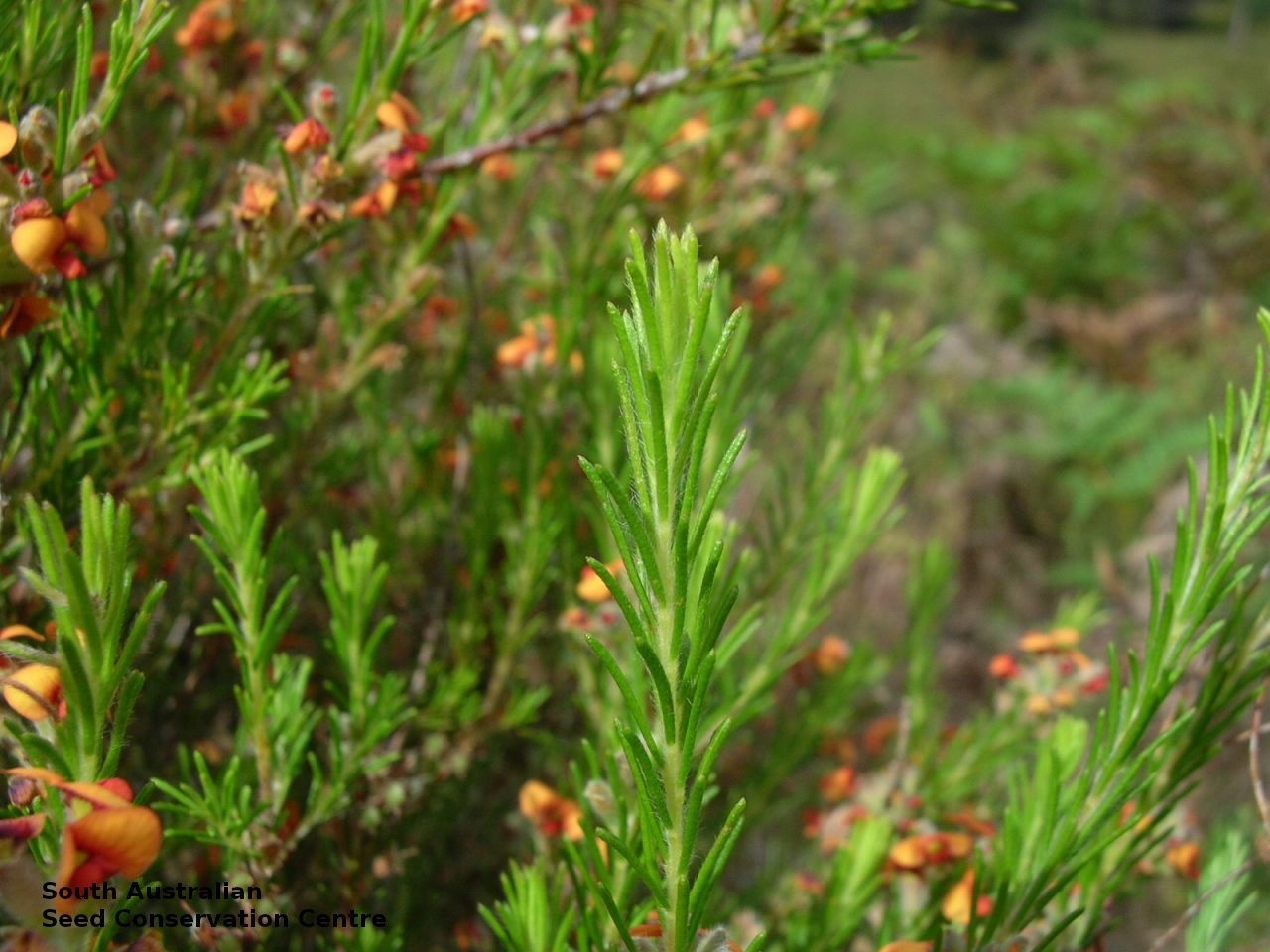
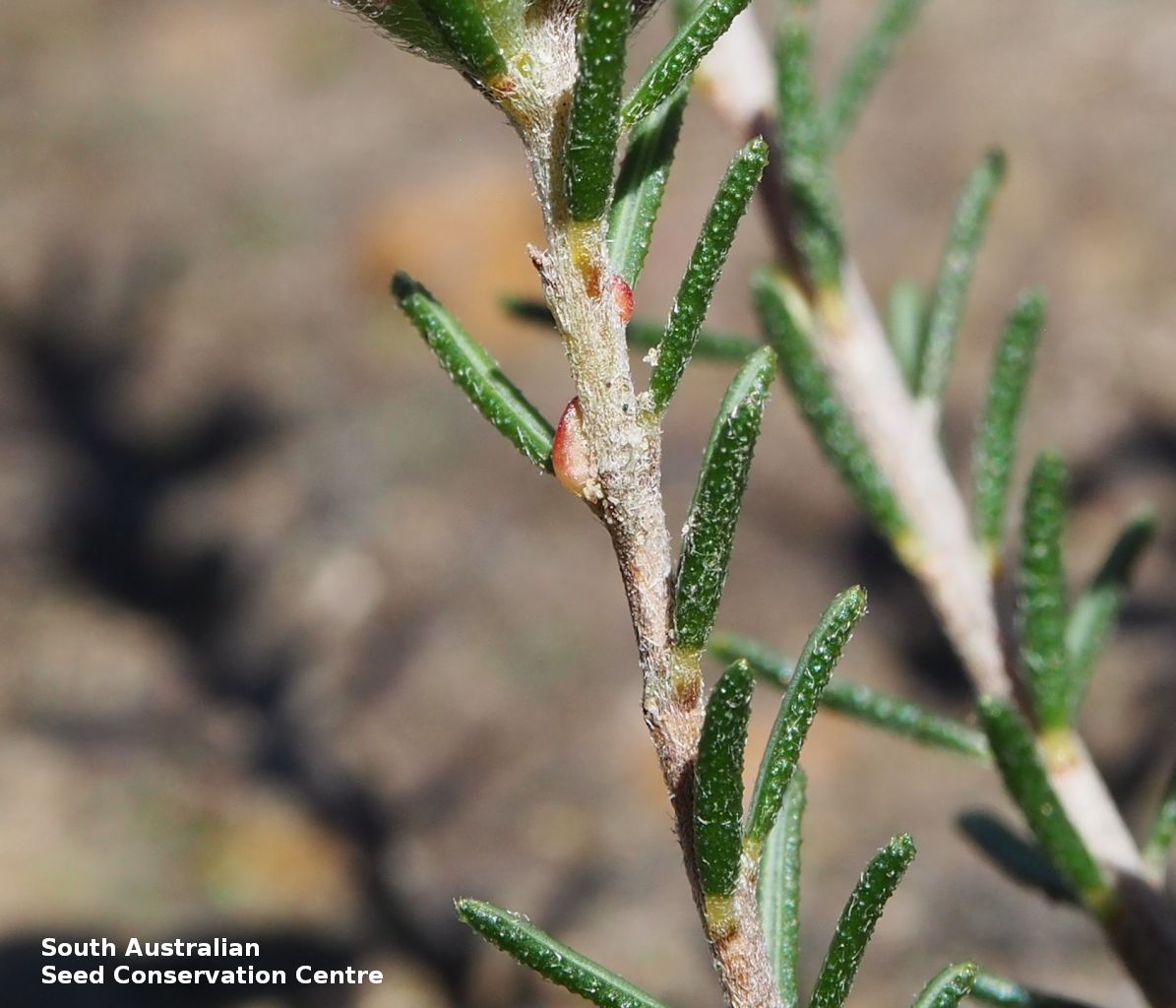
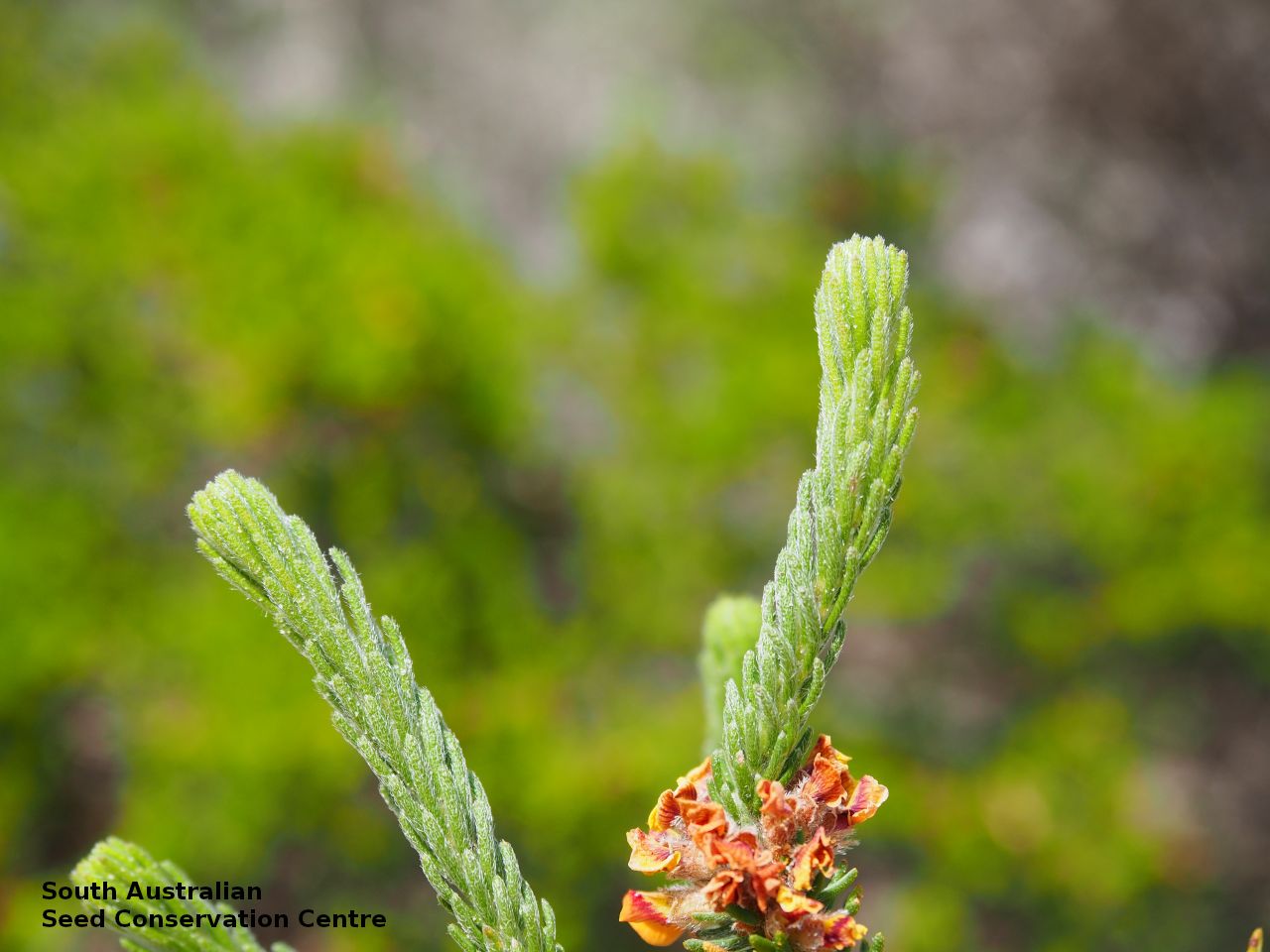
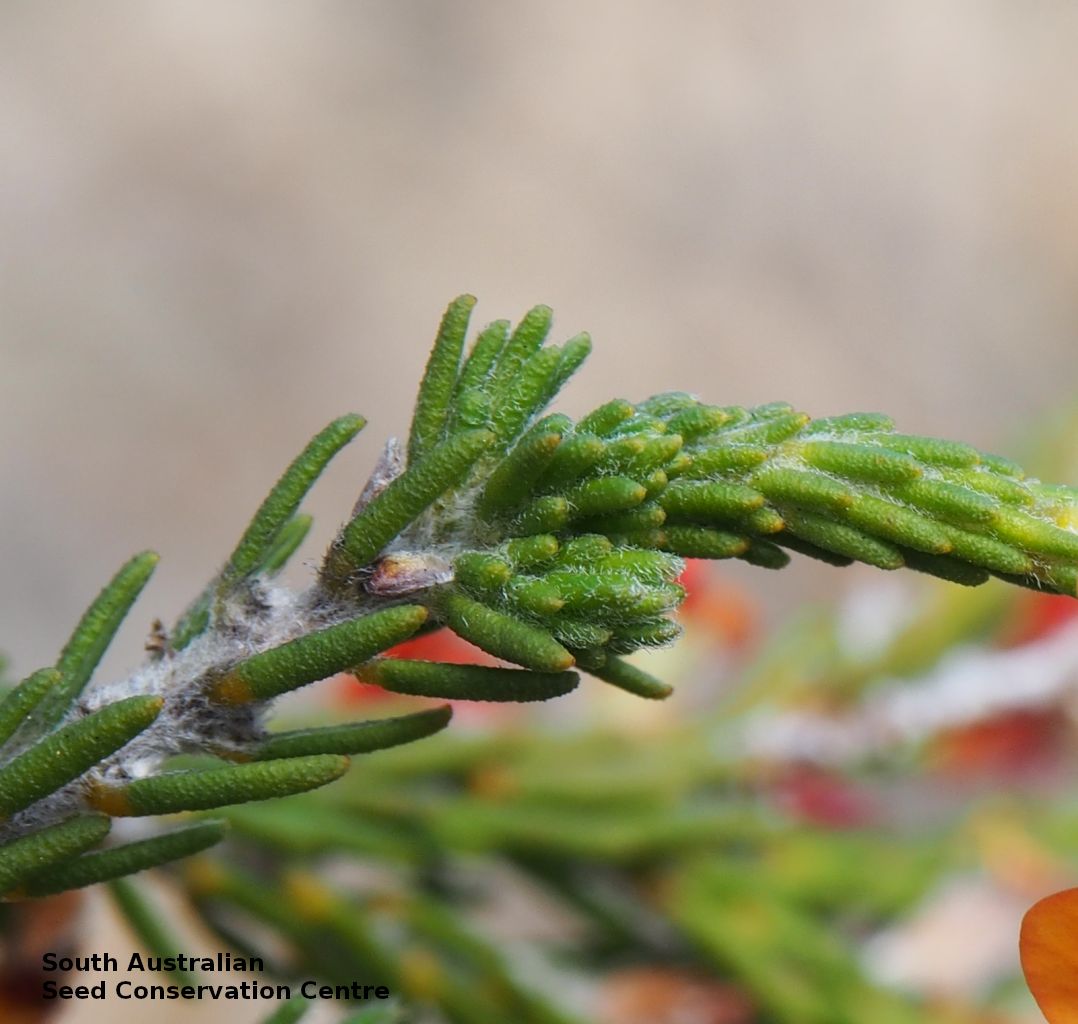
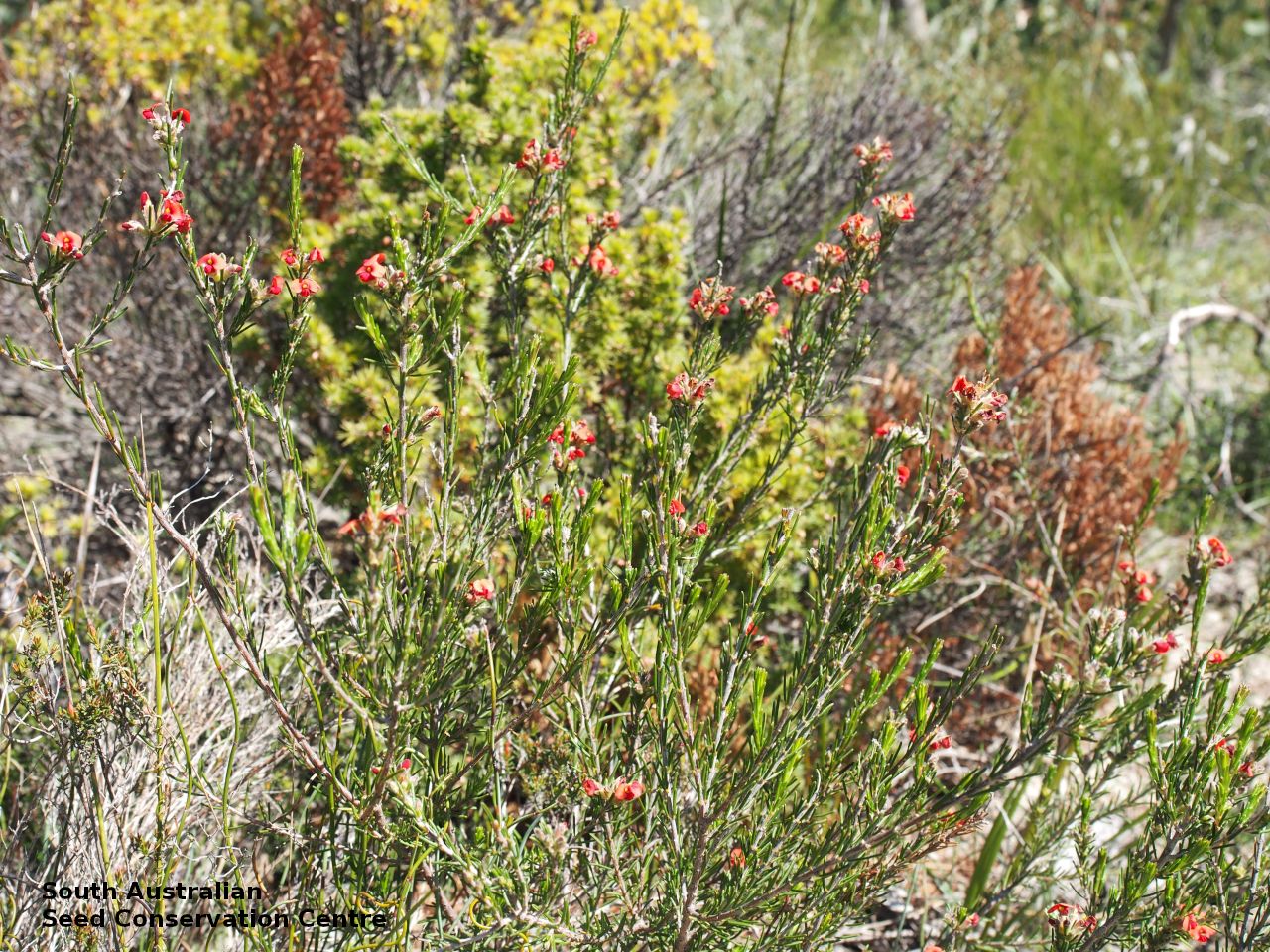
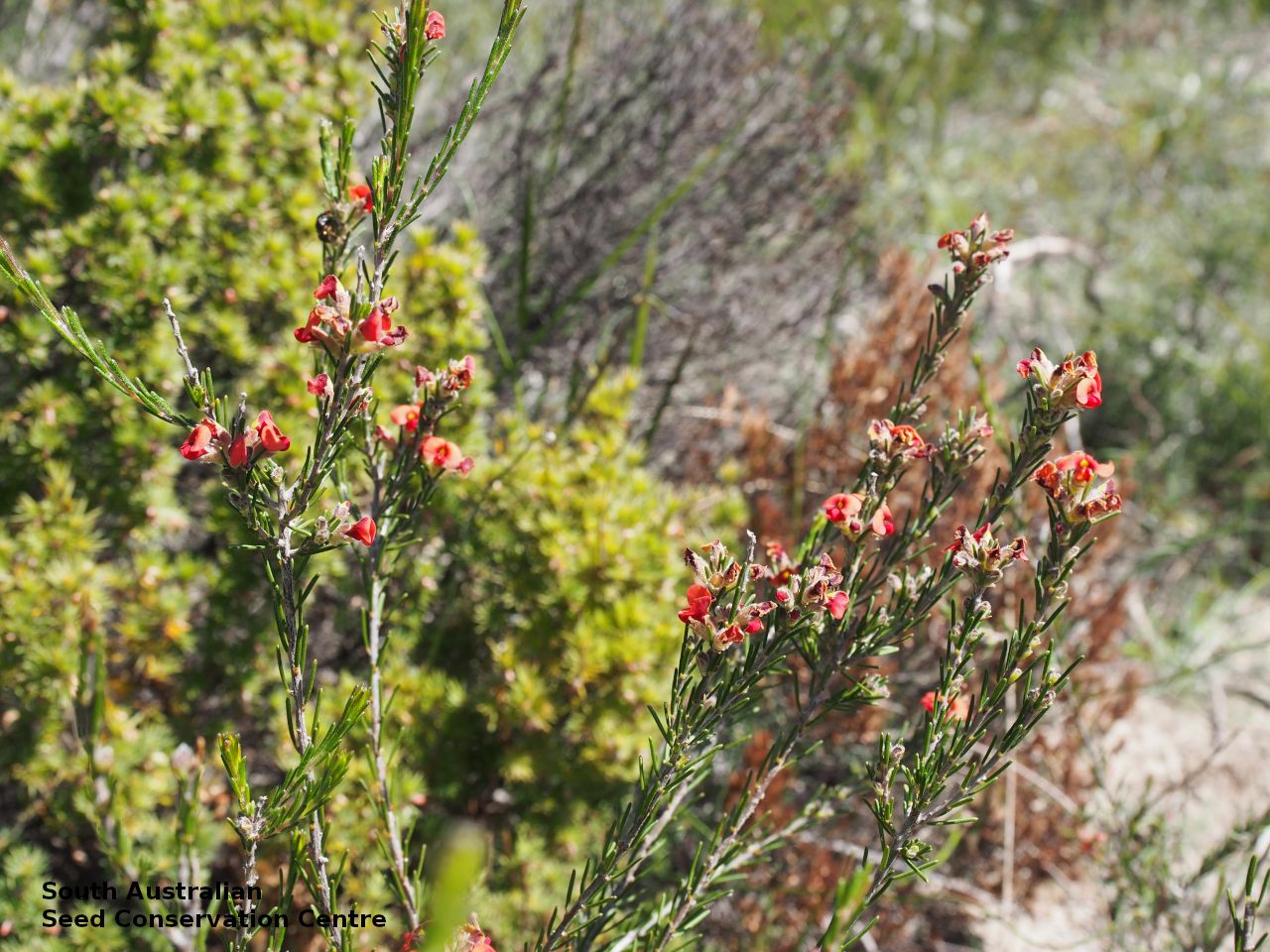
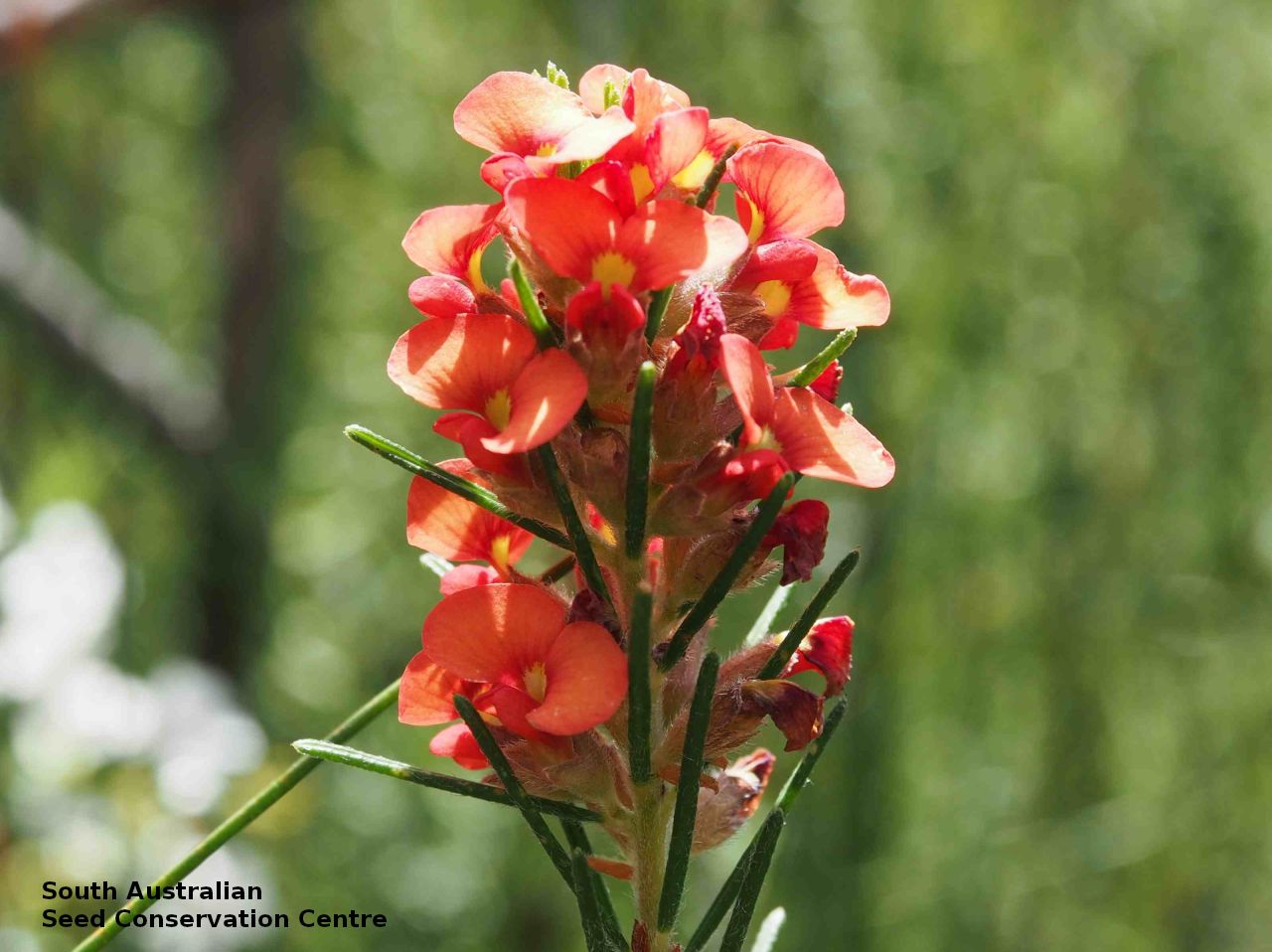
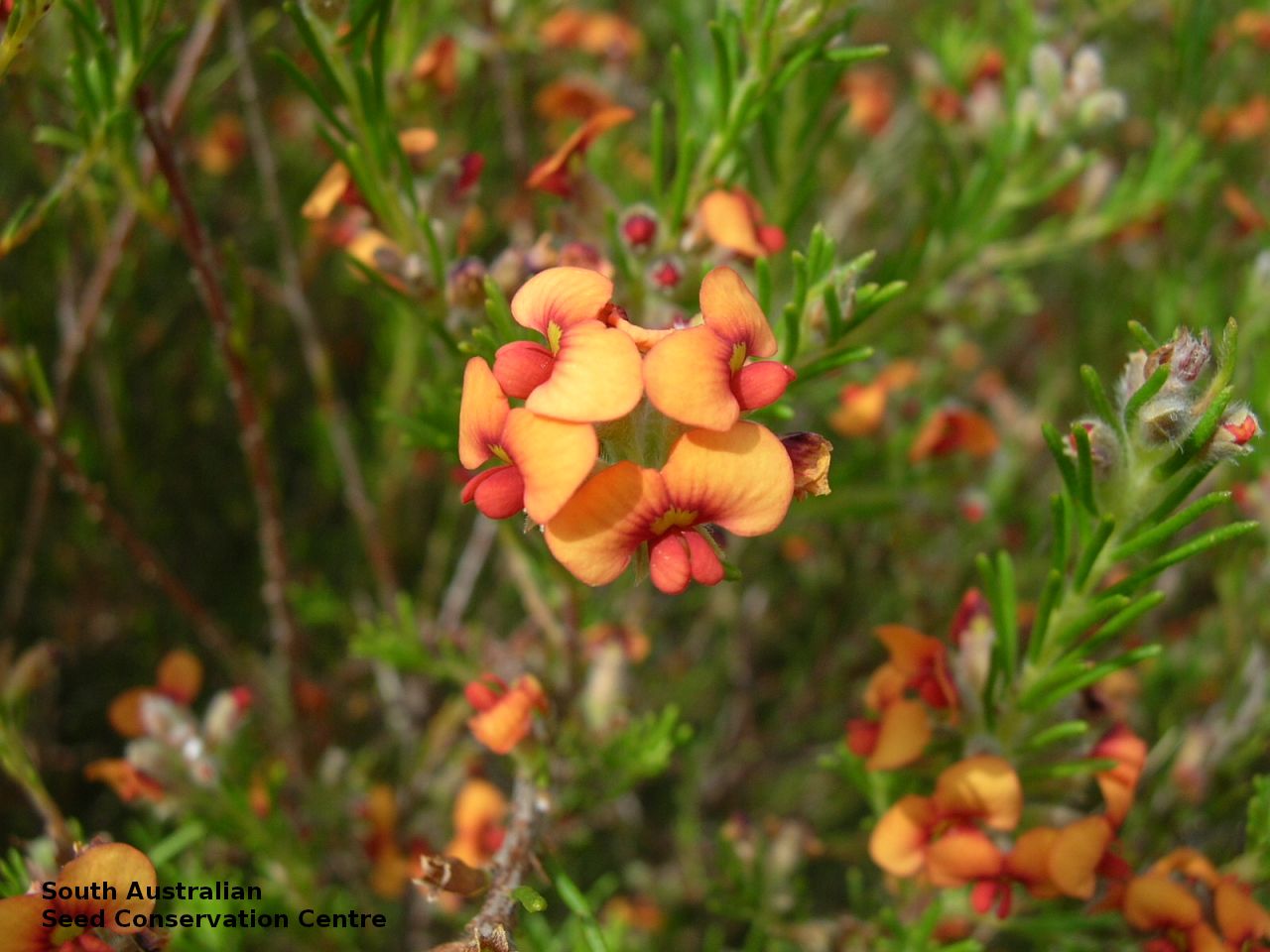
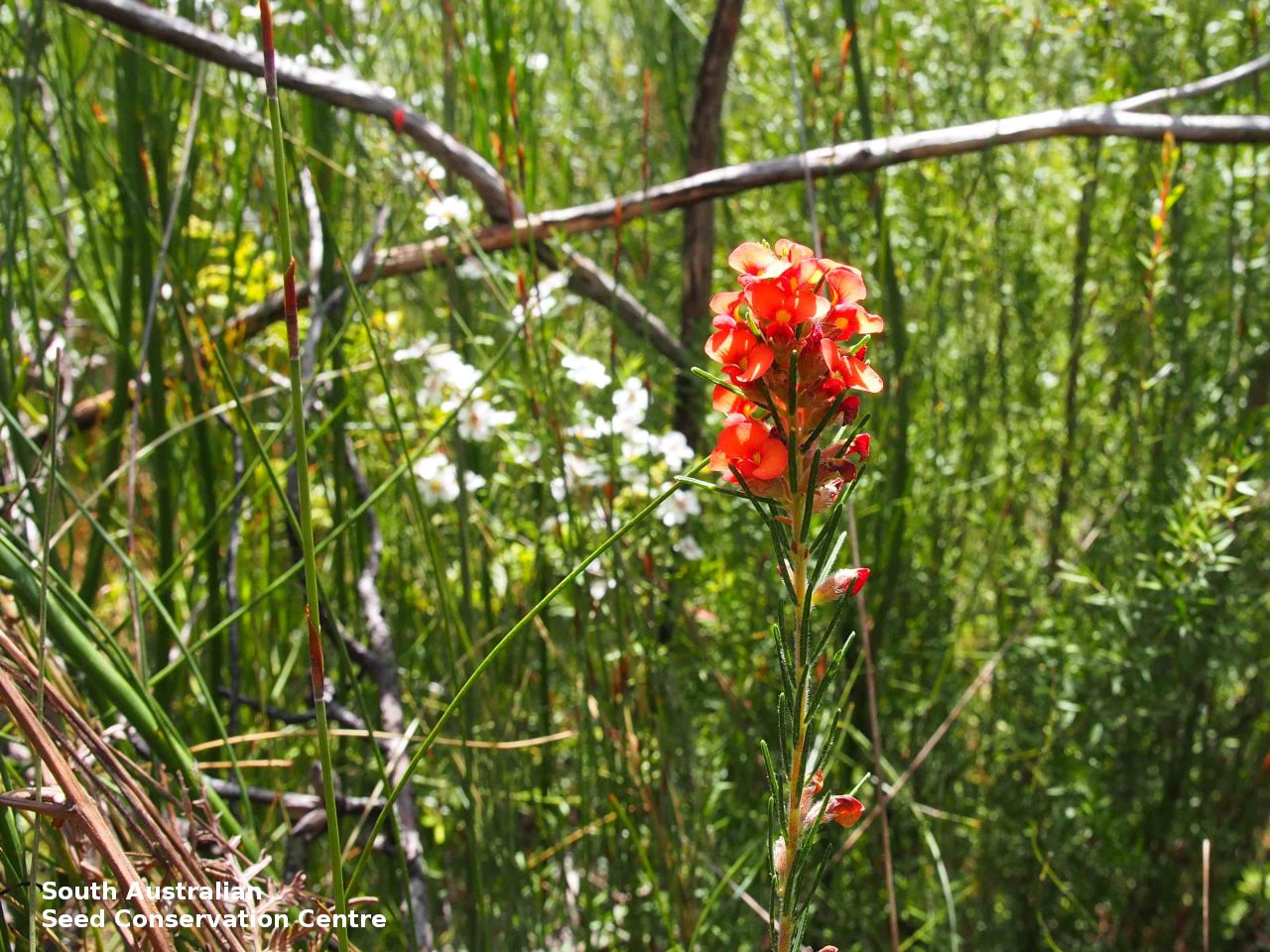
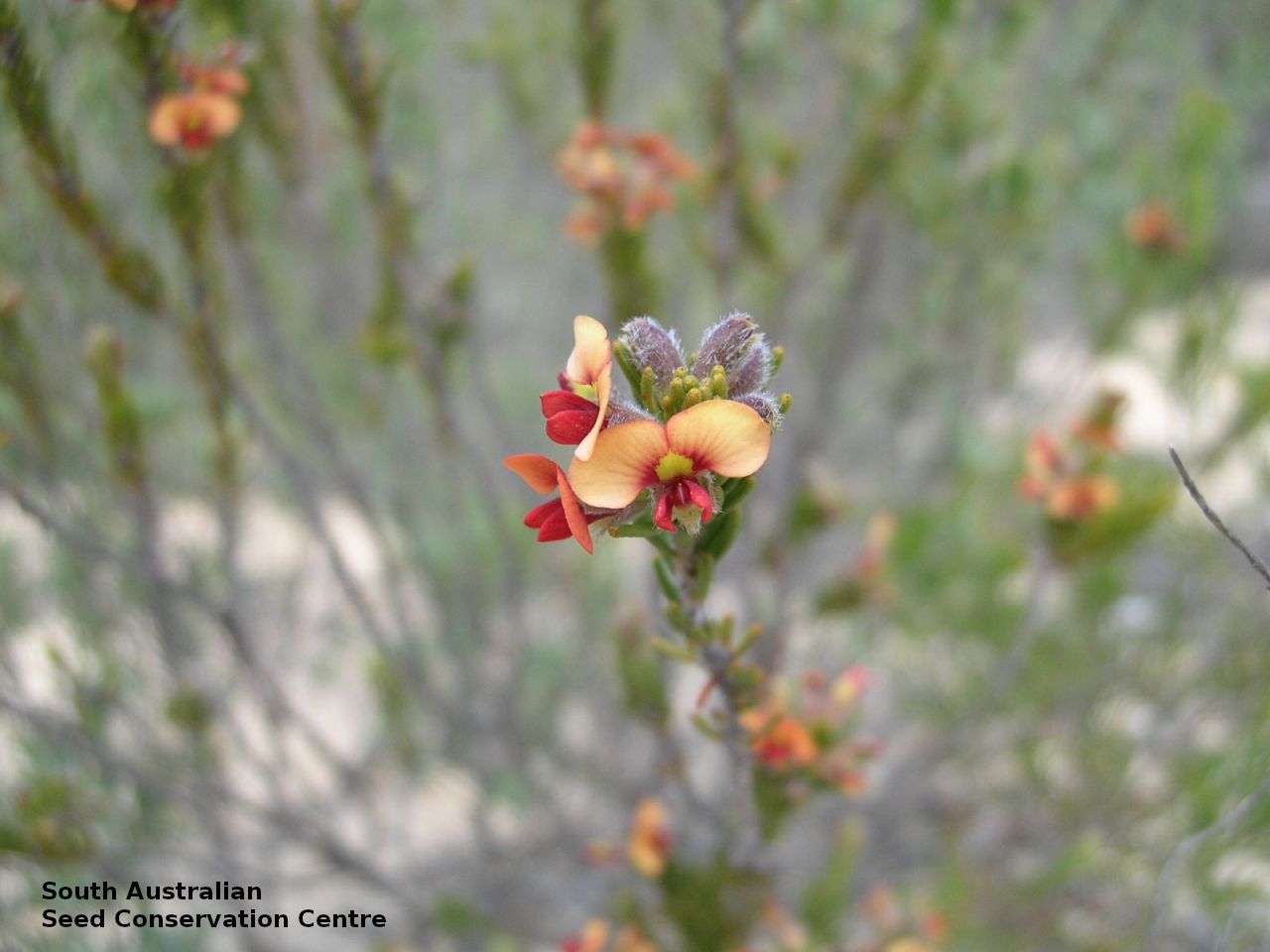
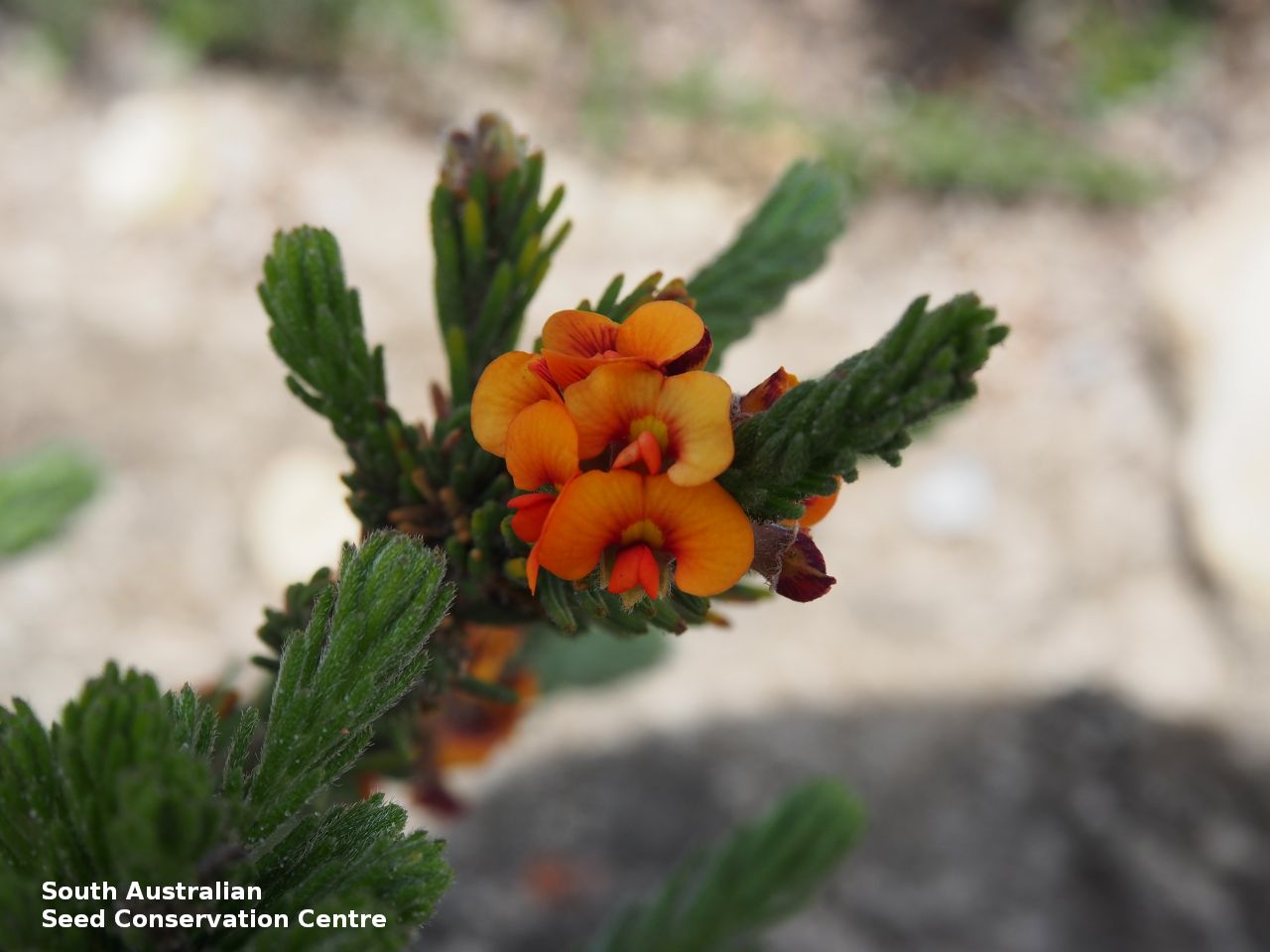
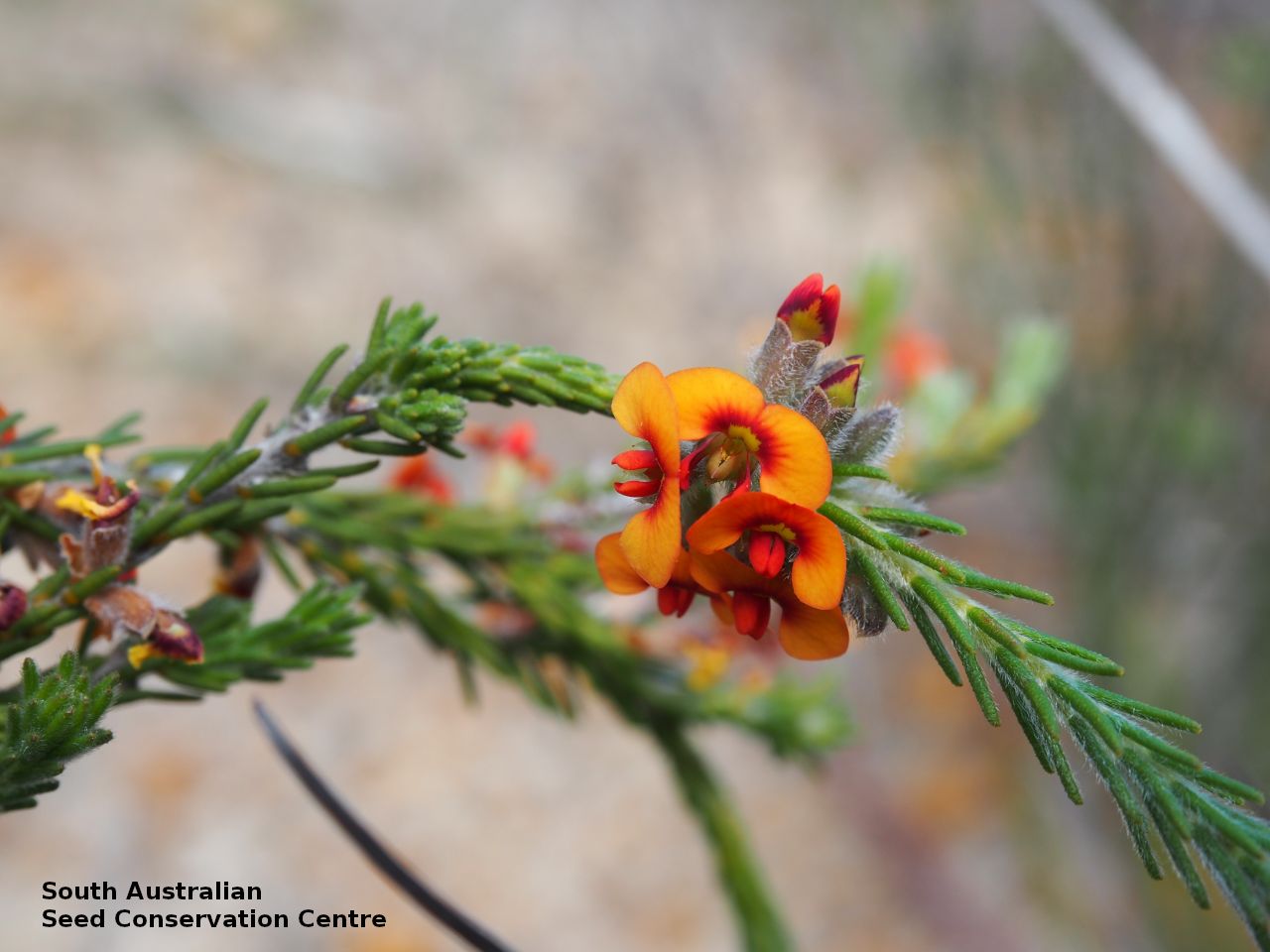
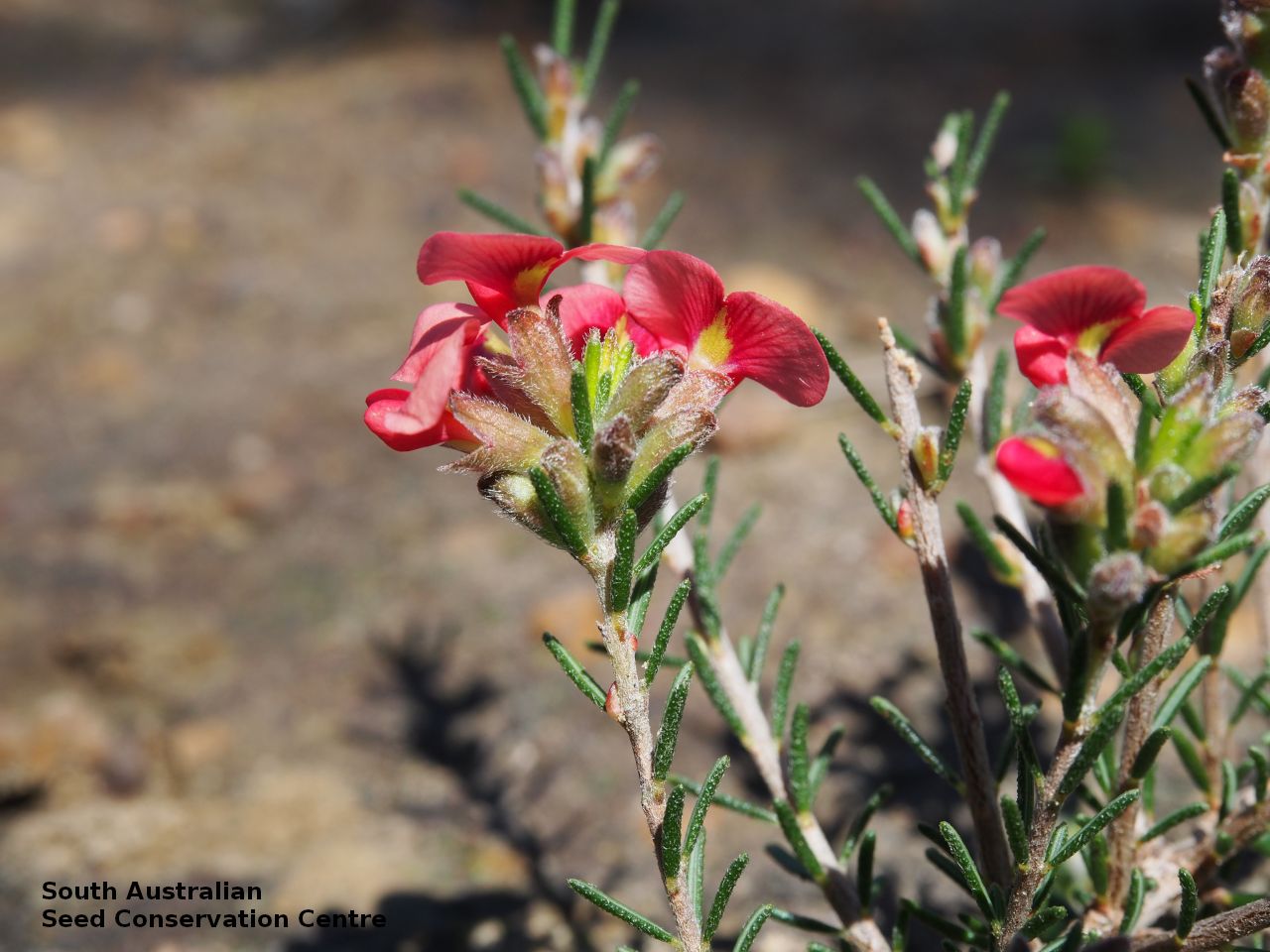
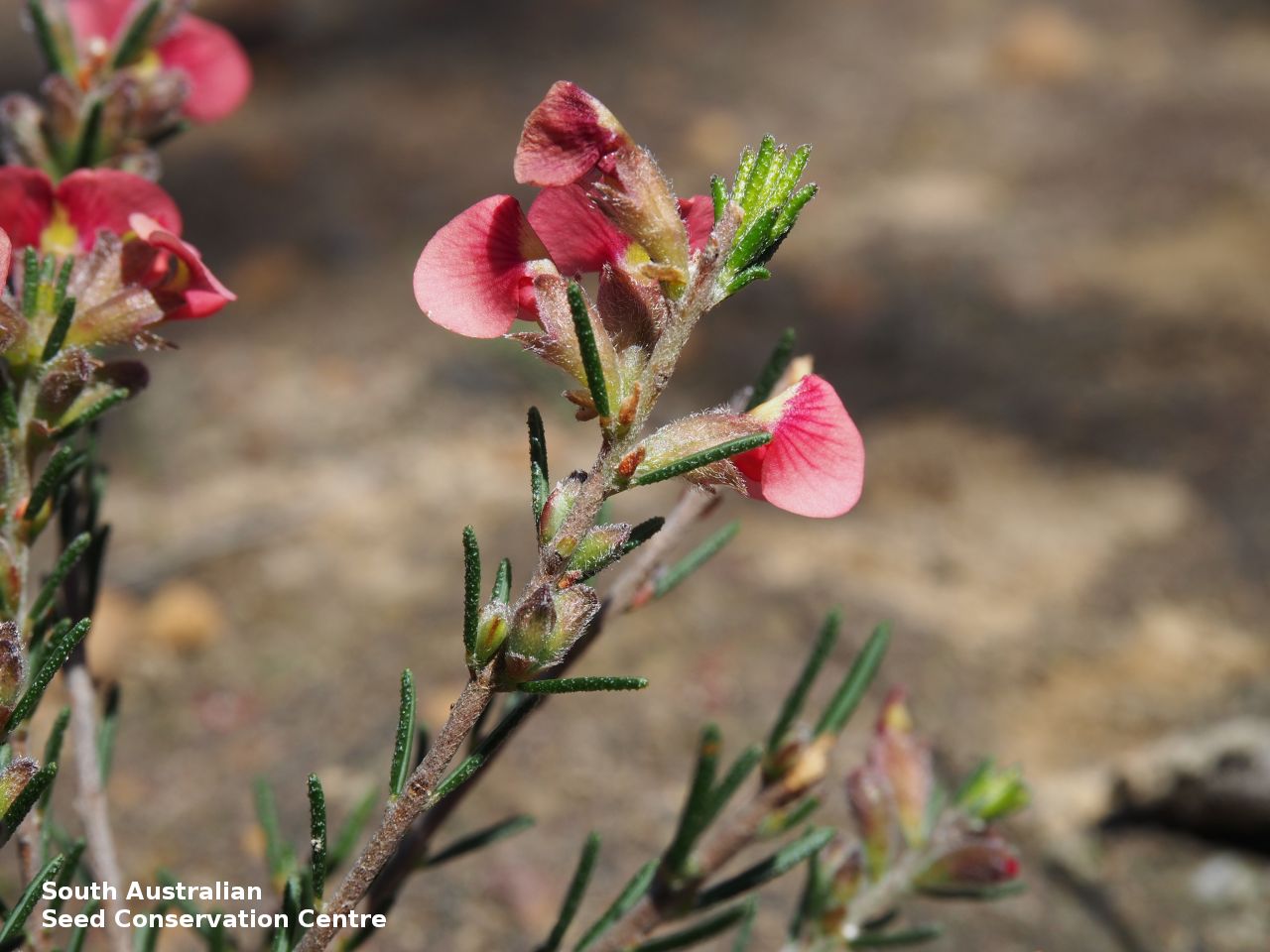
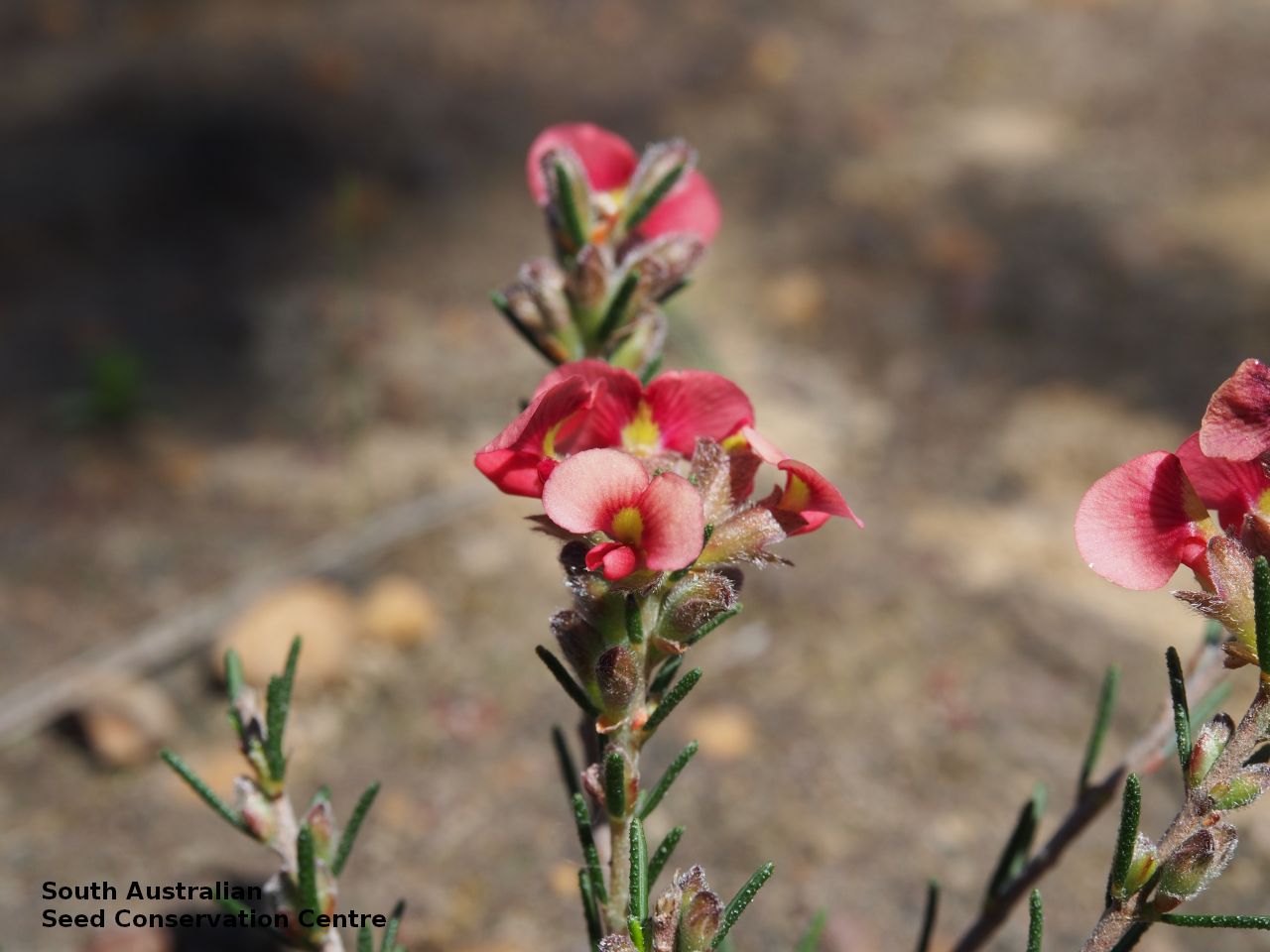
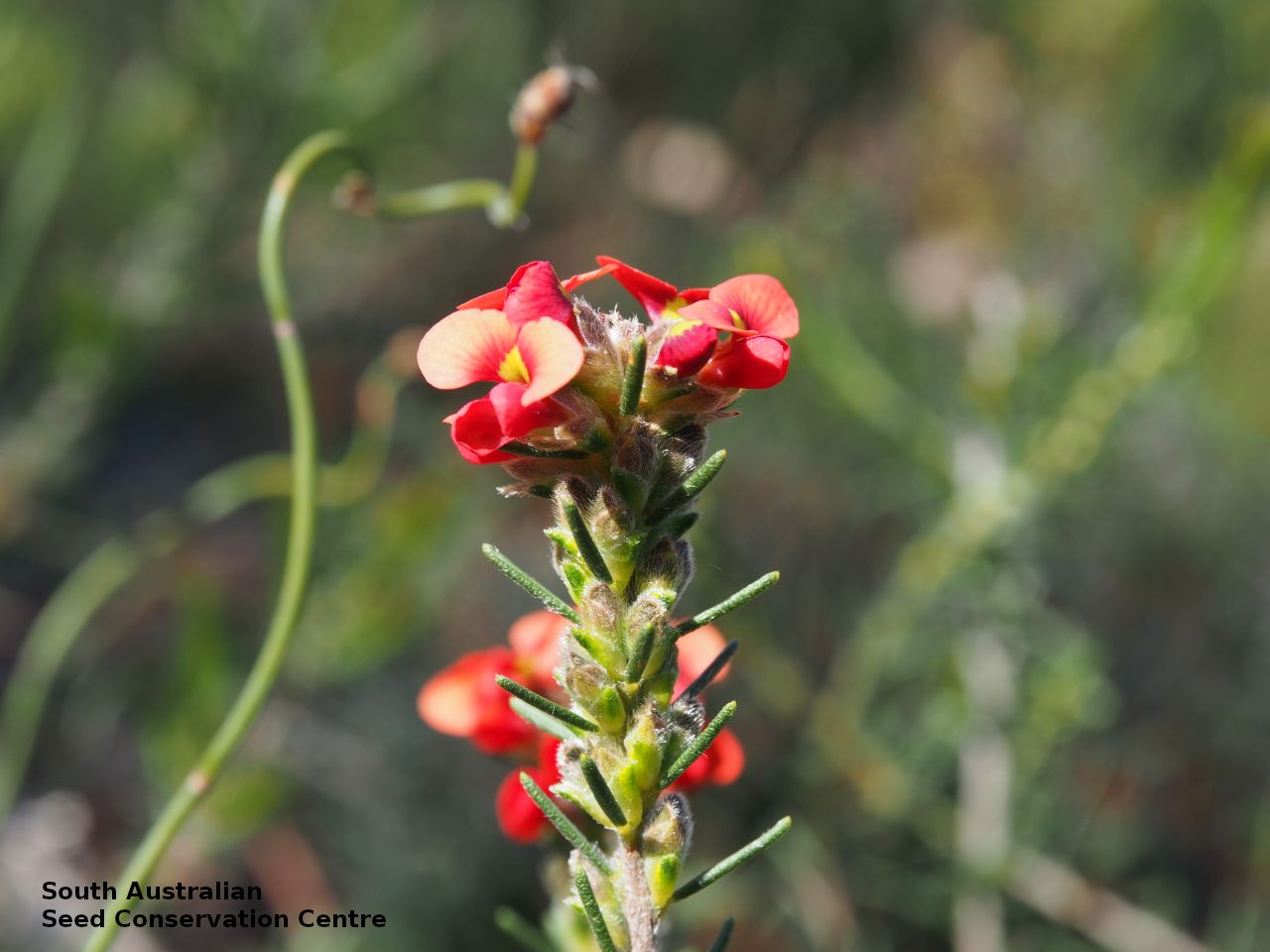
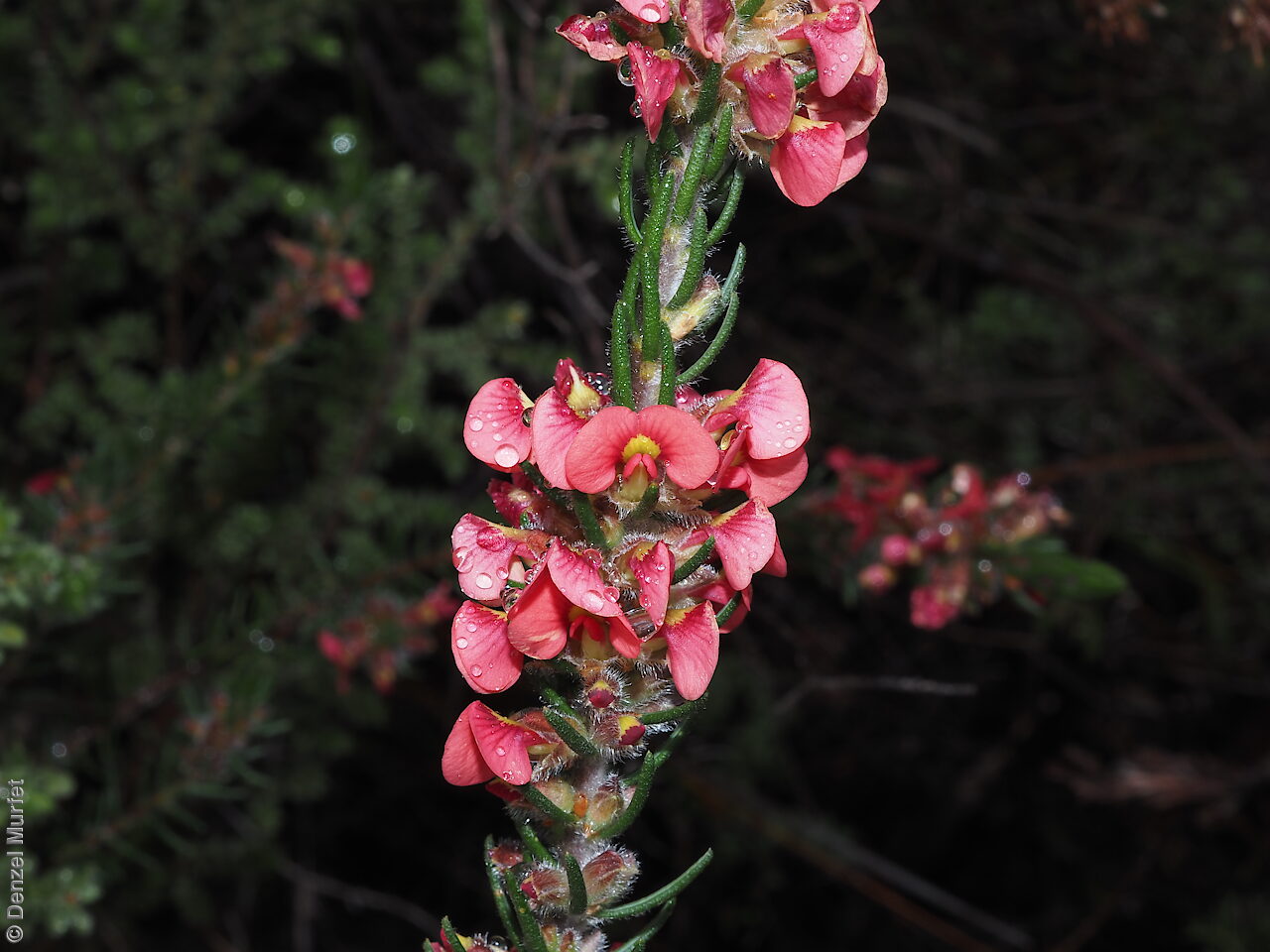
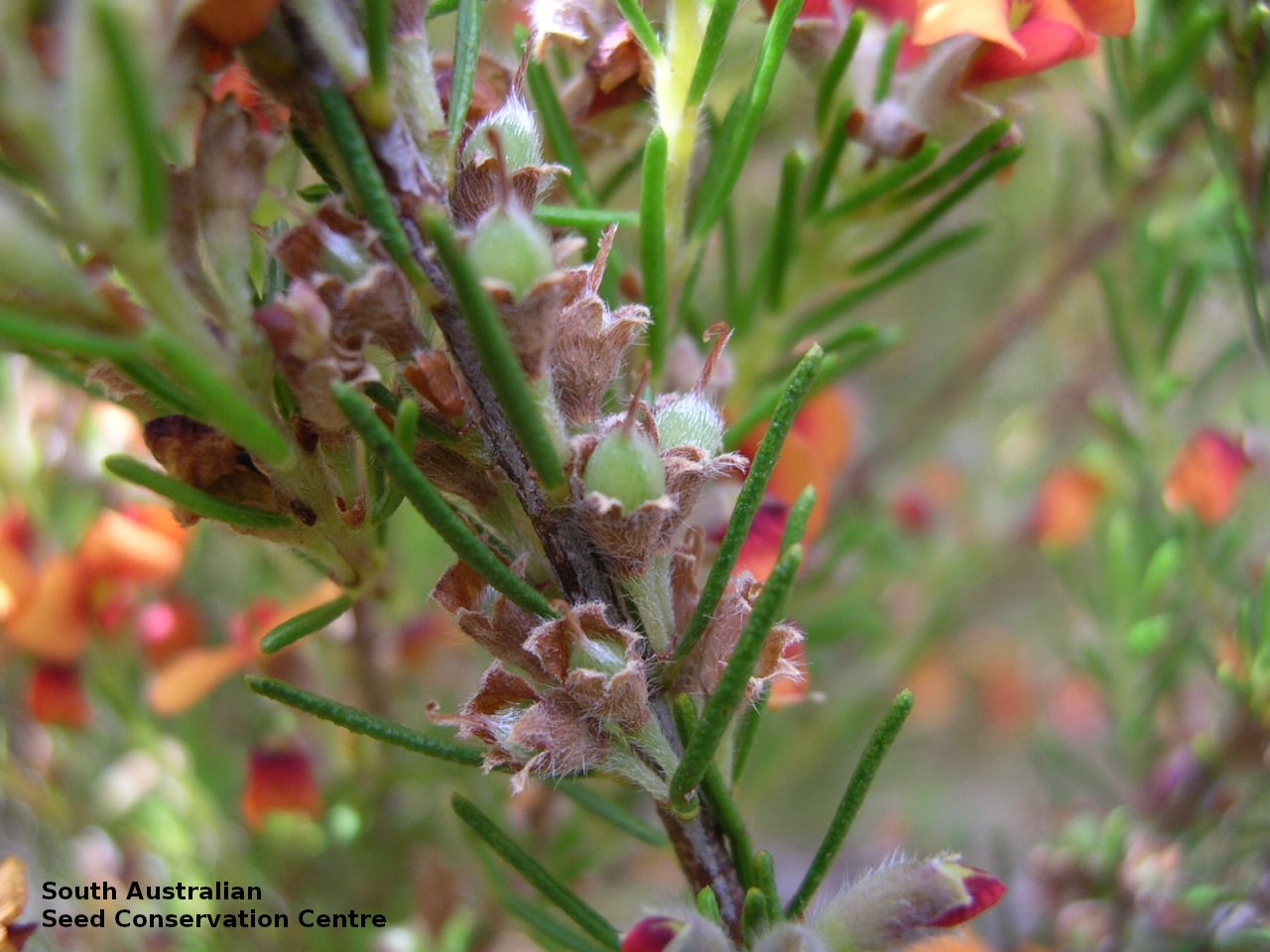
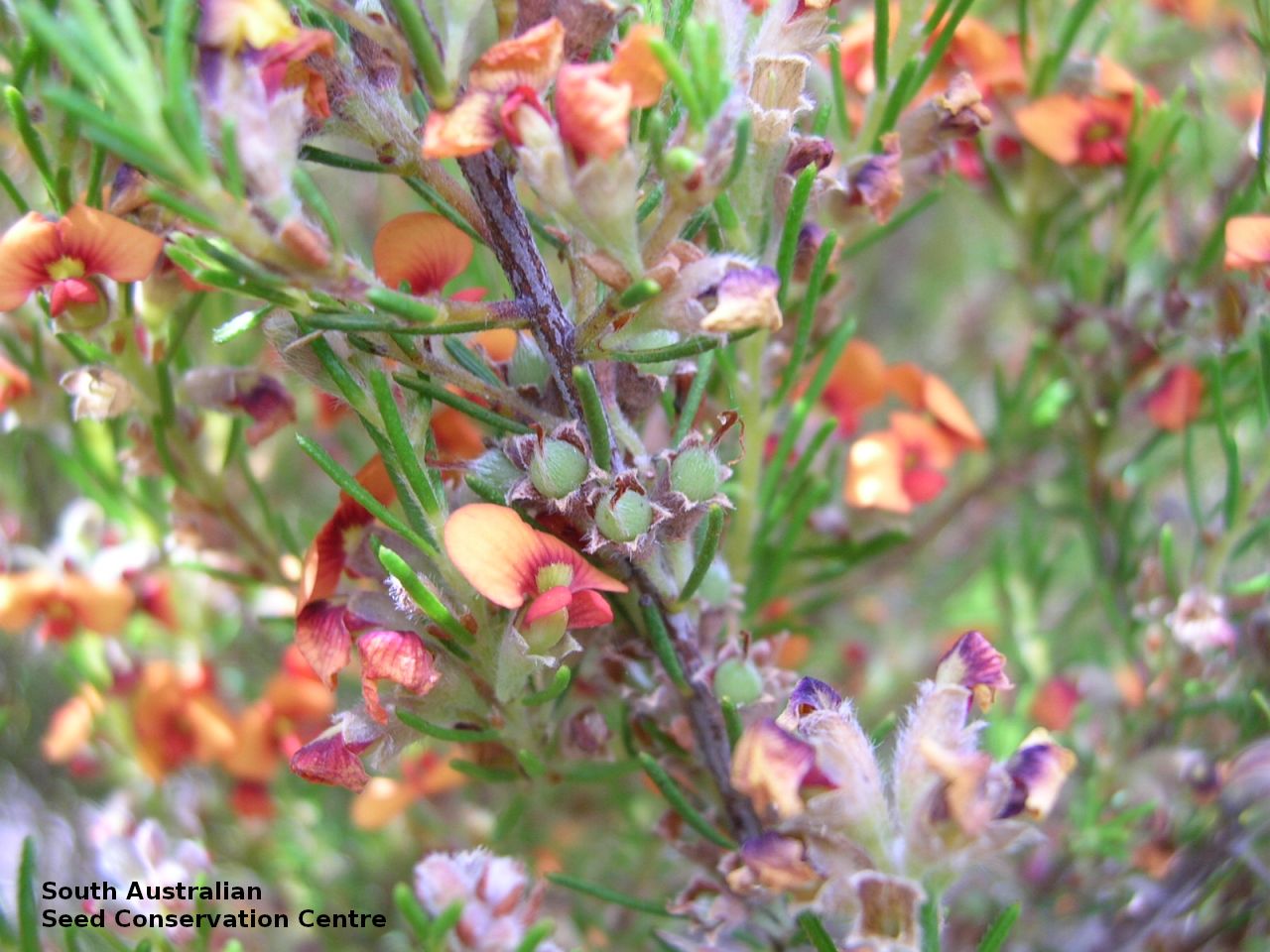
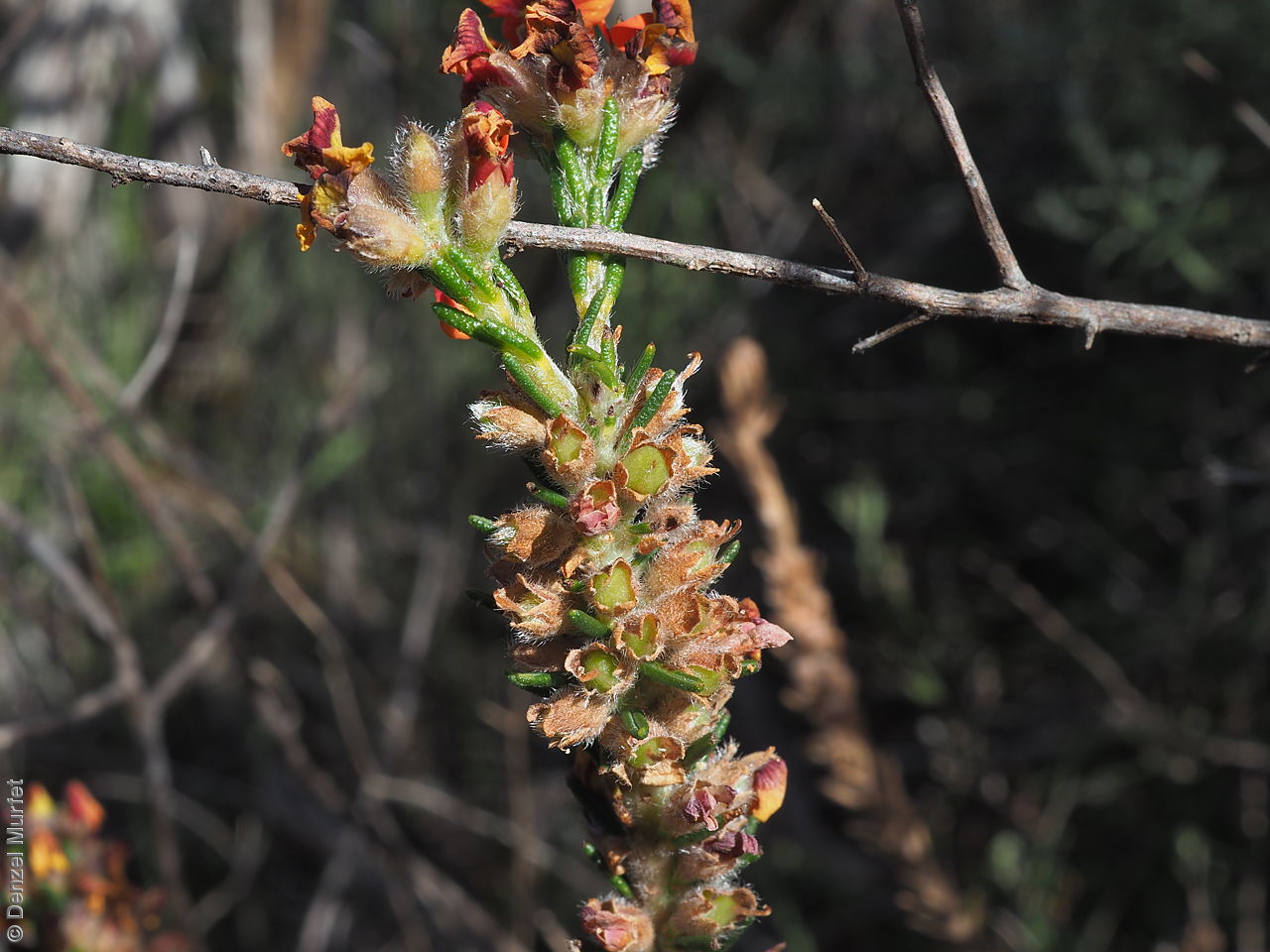
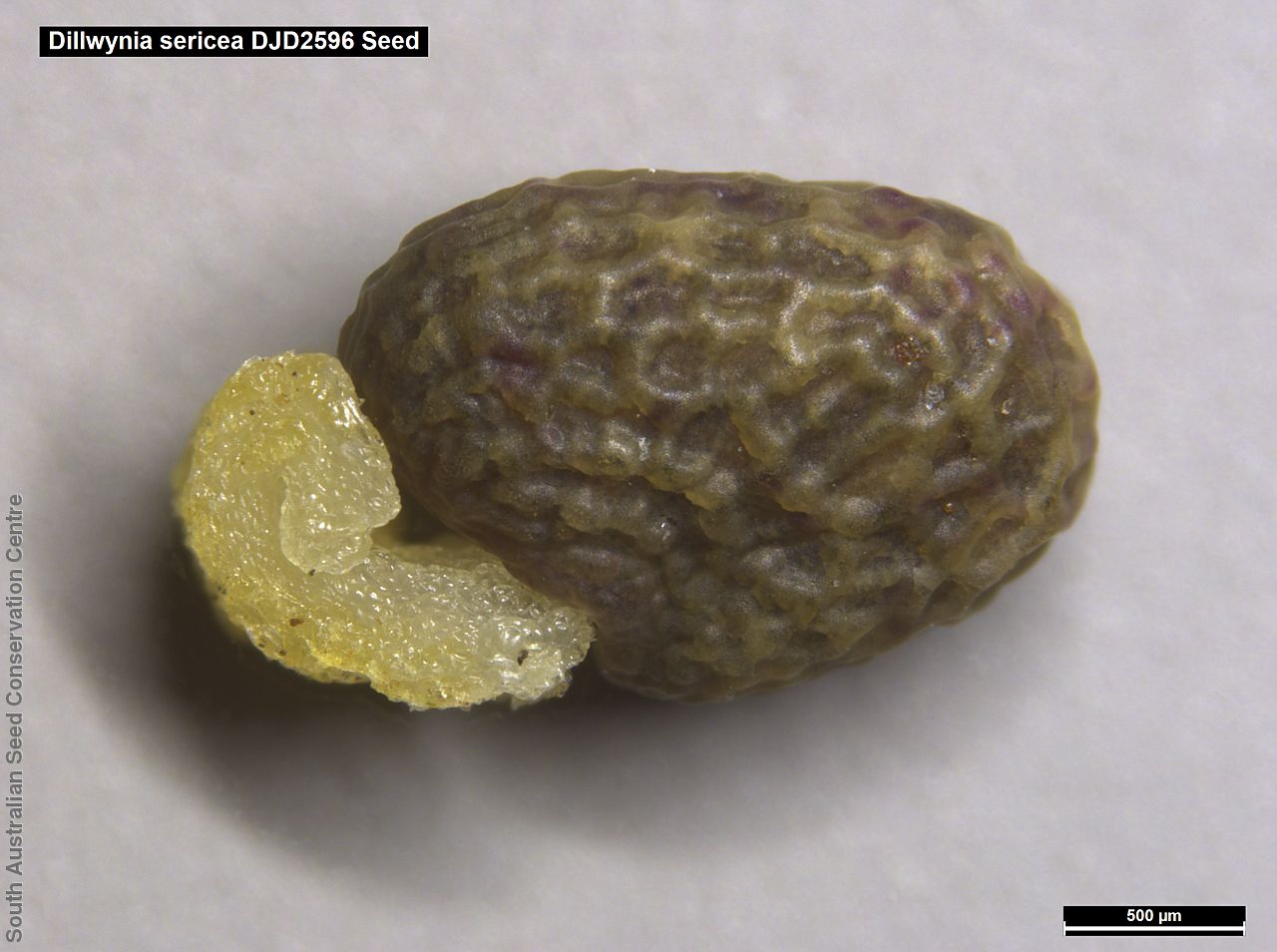
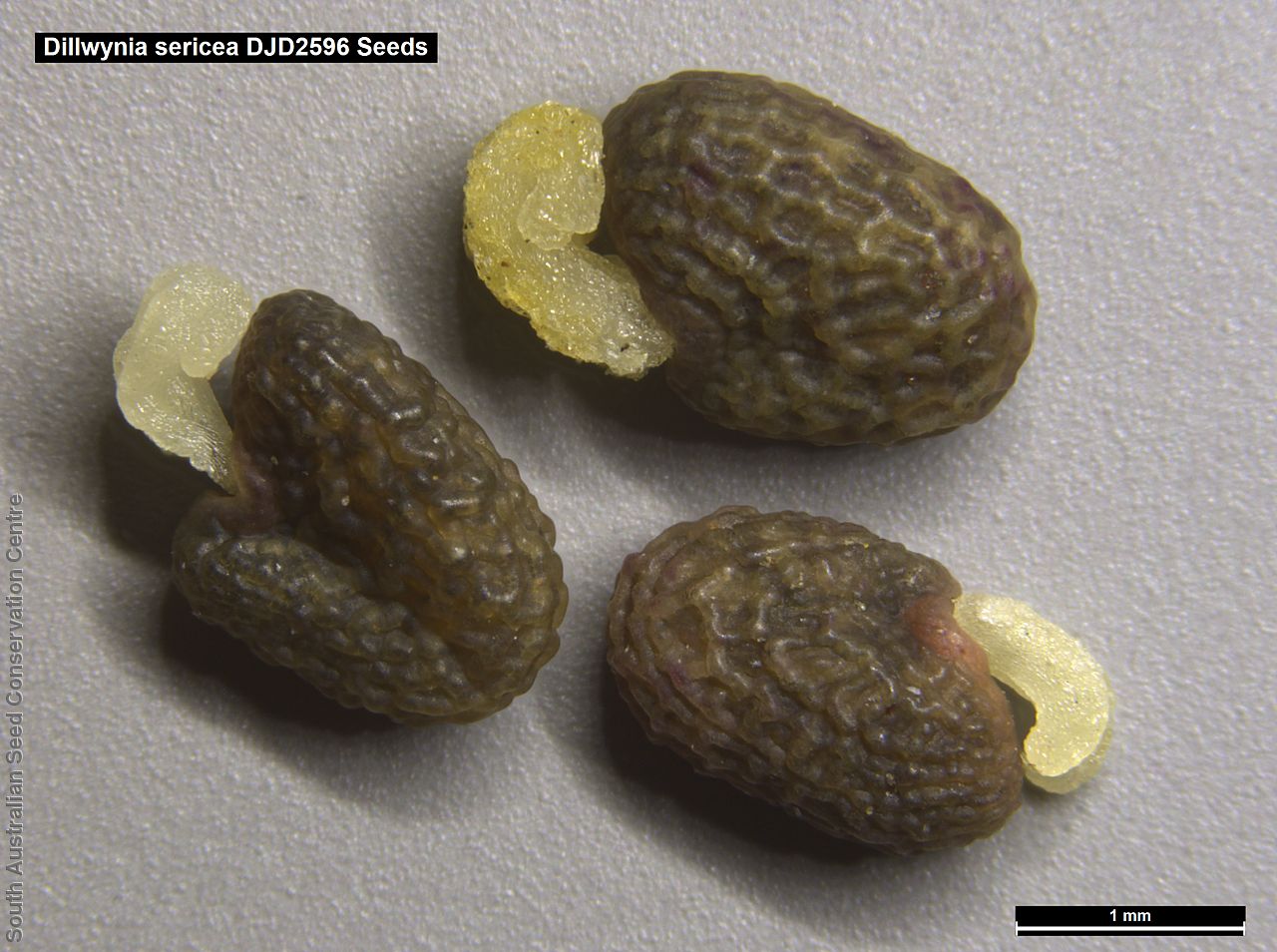

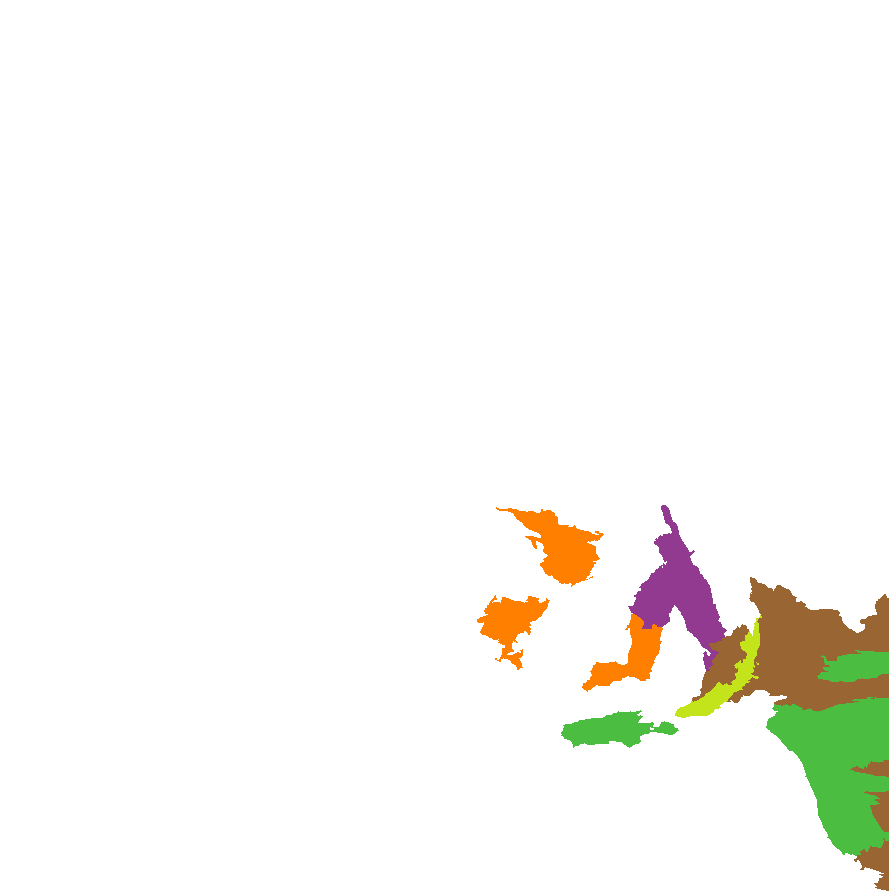
Botanical art
Prior names
Dillwynia floribunda
Etymology
Dillwynia named after Lewis Weston Dillwyn (1778-1855), a British porcelain manufacturer, naturalist and Member of Parliament. Sericea from Latin meaning silky, alluding to the silky hairs on the stems.
Distribution and status
Found on Kangaroo Island, southern Mount Lofty Ranges and the South-east in South Australia, in heathland, woodland and dry sclerophyll forest. Also found in Queensland, New South Wales, Victoria and Tasmania. Native. Common in South Australia. Rare in Queensland. Common in the other States.
Herbarium regions: Murray, Yorke Peninsula, Southern Lofty, Kangaroo Island, South Eastern, Green Adelaide
NRM regions: Adelaide and Mount Lofty Ranges, Kangaroo Island, South Australian Murray-Darling Basin, South East
AVH map: SA distribution map (external link)
Plant description
Erect to procumbent shrub to 1 m tall with stems densely covered with spreading or appressed hairs, particularly the younger branches. Leaves linear, to 20 mm long and 1 mm wide, moderately crowded, smooth or tuberculate, glabrous or with long hairs, apex usually shortly acuminate. Flowers mostly paired (sometimes single) in leaf-axils, often forming dense, leafy flower-spike, apricot-coloured with a red centre (rarely clear yellow) pea-flowers. Flowering between August and December. Fruits are brown ovoid pods to 5 mm long and 3.5 mm wide, with white hairs. Seeds are dark brown, reniform to 2.5 mm long and 1.5 mm wide, with a wrinkled surface and a cream aril. Seed embryo type is bent.
Seed collection and propagation
Collect seeds between December and February. Collect mature pods that are brown or turning brown. It should contain a black hard seeds. Place the pods in a paper bag and leave to dry for at lease a week. Then rub the seed pods to dislodge the seeds. Use a sieve to separate the seeds from unwanted material. Seed viability is usually high. This species has physiological dormancy that needs to be overcome for the seed to germinate (e.g. nicking or softening the seed coat).
| Location | No. of seeds (weight grams) | Number of plants | Date collected | Collection number Collection location | Date stored | % Viability | Storage temperature |
|---|---|---|---|---|---|---|---|
| MSB | 1,100 (0.885 g) | 50+ | 12-Dec-2006 | DJD726 Kangaroo Island | |||
| BGA | 1,180 (1.66 g) | 20+ | 4-Dec-2012 | DJD2596 South Eastern | 27-Feb-2014 | 84% | -18°C |
Number of plants: This is the number of plants from which the seeds were collected.
Collection location: The Herbarium of South Australia's region name.
% Viability: Percentage of filled healthy seeds determined by a cut test or x-ray.